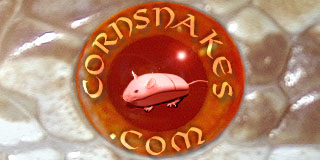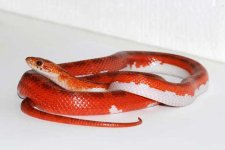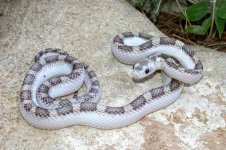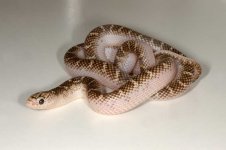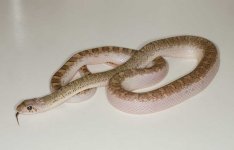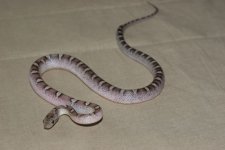-
Hello!
Either you have not registered on this site yet, or you are registered but have not logged in. In either case, you will not be able to use the full functionality of this site until you have registered, and then logged in after your registration has been approved.
Registration is FREE, so please register so you can participate instead of remaining a lurker....
Please be certain that the location field is correctly filled out when you register. All registrations that appear to be bogus will be rejected. Which means that if your location field does NOT match the actual location of your registration IP address, then your registration will be rejected.
Sorry about the strictness of this requirement, but it is necessary to block spammers and scammers at the door as much as possible.
You are using an out of date browser. It may not display this or other websites correctly.
You should upgrade or use an alternative browser.
You should upgrade or use an alternative browser.
Pied Side or Whiteside..??????
- Thread starter TandJ
- Start date
I don't know if "Whitesided" in Texas Ratsnakes is the same thing as the "pied-sided" in bloodred corns - certainly my Whitesided male Texas doesn't look anything like the pied-sided corn photos I've seen. It does make me wonder if it's a compatible gene - or what it would look like on a corn - but I'm not sure I want to get into producing intentional 50/50 corn/ratsnake hybrids.
Susan
Go Ahead, Make My Day!
At this stage, I would personally call the trait seen in Texas and black rat snakes "white-sided" as that describes exactly what the phenotype looks like. However, for corn snakes, I don't think anyone has produced an individual with the white on both sides running the entire length of the snake, so "pied-sided" is still the most descriptive term.
And calling certain bloodreds "white-sided" when they simply have very pale diffused sides is a little inaccurate and leads to some confusion with the genetic trait found in the other rat snakes. But that's just my humble opinion.
And calling certain bloodreds "white-sided" when they simply have very pale diffused sides is a little inaccurate and leads to some confusion with the genetic trait found in the other rat snakes. But that's just my humble opinion.
Blue Apple Herps
aka Matthew, PhD
I agree with Susan. I think pied implies random patches of white, whereas white-sided suggests what is seen in some of the rats: white sides running the length of the corn. I also agree that calling certain blood-reds white-sided because they're pale, only to have the color mostly fill in later is inaccurate and implies a genetic trait that isn't there.
Maxim
New member
not another name for the same trait! :angry01: pied sided is absolutely adequate for these animals. I think to give them another name for the same trait is stupid!?!?!
so if we discussion this problem, what shall we call perfect diffused sides at bloodreds? still a third name for this look?
so if we discussion this problem, what shall we call perfect diffused sides at bloodreds? still a third name for this look?
MichellesCreatures
New member
Even though I started calling my Granites whitesided (I dont even remember where I got that from, but I did get it from another breeder) I agree they are better called Pied sided Granites. But the real question is, how do we tell the two lines apart? (McDonalds line vs SMR's)
And just for fun, I will attempt a cross with one of my Pied Granites to a W/S rat.....just to see what happens.
And none of my Pied Granites have delevoped any coloration whatsoever in the pied markings (just for the record)
I wanted to add, all my lines (both Granite and Bloods) that ended up with Pied in them came from Bayou stock.
And just for fun, I will attempt a cross with one of my Pied Granites to a W/S rat.....just to see what happens.
And none of my Pied Granites have delevoped any coloration whatsoever in the pied markings (just for the record)
I wanted to add, all my lines (both Granite and Bloods) that ended up with Pied in them came from Bayou stock.
Last edited:
ghosthousecorns
Well-known member
So the difference is the fact that they occur in 2 different species? :shrugs: Whitesided - rat snakes, Pied-sided - corn snakes. Unless I'm understanding it wrong.
SnakeCreations
Ophiolatress
Even though I started calling my Granites whitesided (I dont even remember where I got that from, but I did get it from another breeder) I agree they are better called Pied sided Granites. But the real question is, how do we tell the two lines apart? (McDonalds line vs SMR's)
And none of my Pied Granites have delevoped any coloration whatsoever in the pied markings (just for the record)
I wanted to add, all my lines (both Granite and Bloods) that ended up with Pied in them came from Bayou stock.
I would concur with Michelle... the pair I have from her actually have developed more white rather than had the white-ish areas filled in. The 'look' is more pied to me than the more uniform white-sided, like I see on my rats. I think they're quite stunning, regardless.
Enjoy!
Blue Apple Herps
aka Matthew, PhD
I would concur with Michelle... the pair I have from her actually have developed more white rather than had the white-ish areas filled in. The 'look' is more pied to me than the more uniform white-sided, like I see on my rats. I think they're quite stunning, regardless.
Enjoy!
That's awesome then! My comment was directed at snakes I've seen for sale in the past who just had very nice diffusion and looked white or pale, then we see pics from 6 months later and they all have color, though perfect diffusion. That I don't think is a pied/white-sided trait. Now ones that maintain their whiteness, then yeah, if it's proven to be an inheritable gene, then they should be labeled accordingly.
SnakeCreations
Ophiolatress
That's awesome then! My comment was directed at snakes I've seen for sale in the past who just had very nice diffusion and looked white or pale, then we see pics from 6 months later and they all have color, though perfect diffusion. That I don't think is a pied/white-sided trait. Now ones that maintain their whiteness, then yeah, if it's proven to be an inheritable gene, then they should be labeled accordingly.
I agree, completely....
Susan
Go Ahead, Make My Day!
Even though I started calling my Granites whitesided (I dont even remember where I got that from, but I did get it from another breeder) I agree they are better called Pied sided Granites. But the real question is, how do we tell the two lines apart? (McDonalds line vs SMR's)
And just for fun, I will attempt a cross with one of my Pied Granites to a W/S rat.....just to see what happens.
And none of my Pied Granites have delevoped any coloration whatsoever in the pied markings (just for the record)
I wanted to add, all my lines (both Granite and Bloods) that ended up with Pied in them came from Bayou stock.
I never meant any offense about your lovely pied-sided granites.
I really like the idea of crossing a pied-sided with a white-sided rat to see if the genes are compatible or not. But is it really that big of a difference between the two lines? Hasn't it been determined that it's all the same gene, or am I completely mistaken and need to learn some more about this particular morph?
Drizzt80
Dakota Corns
From what I recall, Don and his partner(s) in the first trials specifically called the Bloodred trait Pied-side to avoid any confusion with the white sided rat genetics. I think that was a pretty good choice on his part. When/where white sided came about for certain corns, I can't recall but think it's creating (will create) unnecessary confusion. :shrugs:
D80
D80
zorro
Old Guy
I think what you are saying is right about pied vs. whiteside rats, to me what some are calling whiteside corns is just perfect diffusion like my Ghost blood, I would never call him whiteside.From what I recall, Don and his partner(s) in the first trials specifically called the Bloodred trait Pied-side to avoid any confusion with the white sided rat genetics. I think that was a pretty good choice on his part. When/where white sided came about for certain corns, I can't recall but think it's creating (will create) unnecessary confusion. :shrugs:
D80

SODERBERGD
Active member
White-sided VS pied-sided . . .
The main reason I called them pied-sided was due (in part) to forward thinking. If you look at white-sided anything (blood pythons, bull snakes, rat snakes, king snakes, etc.), you notice they're white-sided from neck to tail. While I agree it's difficult to apply pie bald or pied to what we see in the superior examples of the bloods, some actually have very little white on their sides, AND not all of them have white scales on the face. If the ghost blood Zorro has is an example of what we can expect from the anery types each and every time, they may well deserve the name white-sided. If however, the delineation between dorsal markings and the white sides is not clear and constant, I think we should hold off calling that a white-sided. In other words, if some have the white laterally from neck to tail and others do not, we should save the name white-sided for the mutation that is surely going to show itself someday, just like the gene in the other serpent species.
Compared this better-than-average example of a p/s blood, note how consistant the white sides are on the other species shown; black rat, Brook's king, and bull. As you can see, on this p/s blood example, the white randomly and variably starts and stops in different places from specimen to specimen. Unlike true white-sided serpents, my line displays disjunct zones or patches of white, although they are almost always connected to the white of the ventor. Also, note that compared to the white-sided serpents, there is no clear dorso-lateral delineation between the white and red. White-sided is a slightly variable mutation, but it's either ON or OFF. You seldom (if ever) see it stop and start up again. In short, your mental expectation when you hear the phrase white-sided corn should be a corn snake with a relatively straight margined lateral zone of white, parallel to the zone of dorsal and dorso-lateral markings above it.
There WILL be a completely white-sided corn snake. It's not a matter of IF, but WHEN. If Michelle's mutation in the aneries is consistent (all specimens having the lateral white from neck to tail) AND if it is not genetically linked to anery types, it is exciting to think that this is the white-sided mutation we seek. If not, when that first ON/OFF white-sided corn makes it debut, I hope the name that is most applicable for that mutation is safely waiting for it, so we don't have another renaming nightmare in this industry. Like the white-sided gene in the other serpent species, when we get it in corns, it won't be linked to another color mutation. It will be convertable to all colors and patterns of corns. It's early in the game, but it appears that the p/s gene is linked exclusively to bloods. I hope future breeding trials prove that to be wrong.
The main reason I called them pied-sided was due (in part) to forward thinking. If you look at white-sided anything (blood pythons, bull snakes, rat snakes, king snakes, etc.), you notice they're white-sided from neck to tail. While I agree it's difficult to apply pie bald or pied to what we see in the superior examples of the bloods, some actually have very little white on their sides, AND not all of them have white scales on the face. If the ghost blood Zorro has is an example of what we can expect from the anery types each and every time, they may well deserve the name white-sided. If however, the delineation between dorsal markings and the white sides is not clear and constant, I think we should hold off calling that a white-sided. In other words, if some have the white laterally from neck to tail and others do not, we should save the name white-sided for the mutation that is surely going to show itself someday, just like the gene in the other serpent species.
Compared this better-than-average example of a p/s blood, note how consistant the white sides are on the other species shown; black rat, Brook's king, and bull. As you can see, on this p/s blood example, the white randomly and variably starts and stops in different places from specimen to specimen. Unlike true white-sided serpents, my line displays disjunct zones or patches of white, although they are almost always connected to the white of the ventor. Also, note that compared to the white-sided serpents, there is no clear dorso-lateral delineation between the white and red. White-sided is a slightly variable mutation, but it's either ON or OFF. You seldom (if ever) see it stop and start up again. In short, your mental expectation when you hear the phrase white-sided corn should be a corn snake with a relatively straight margined lateral zone of white, parallel to the zone of dorsal and dorso-lateral markings above it.
There WILL be a completely white-sided corn snake. It's not a matter of IF, but WHEN. If Michelle's mutation in the aneries is consistent (all specimens having the lateral white from neck to tail) AND if it is not genetically linked to anery types, it is exciting to think that this is the white-sided mutation we seek. If not, when that first ON/OFF white-sided corn makes it debut, I hope the name that is most applicable for that mutation is safely waiting for it, so we don't have another renaming nightmare in this industry. Like the white-sided gene in the other serpent species, when we get it in corns, it won't be linked to another color mutation. It will be convertable to all colors and patterns of corns. It's early in the game, but it appears that the p/s gene is linked exclusively to bloods. I hope future breeding trials prove that to be wrong.
Attachments
SODERBERGD
Active member
Fine line ?
We've been working so hard to make the perfect bloodred compounds (cleanest sides) that we could be seeing that there is a fine line between the perfect bloodred type AND white sidedness. After all, the mechanism that fades the sides of superior normally colored bloods may manifest itself in the anery types as sides that LOOK white-sided, but are actually just the reduction or absence of melanin. I know that sounds like the same thing, but it's probably not. I keep hearing from breeders that the white on the sides of the anery types is not predictable in Mendelian fashion. Someone out there knows more about it than I, but I don't think white on snakes and absence of pigment are caused by precisely the same genetic mechanism. :shrugs: Are these dark corns losing their side patterns AND color or are they truly white-sided mutants?
I don't get over here much, so perhaps this subject has come up before. It's just that recently, we're seeing more and more pewters and anery bloods that have the white-sided look (the genetic mechanics of which seem more polygenic than Mendelian). Until someone finitely proves the heritable nature of the white sides on the anery types, we could be seeing a pseudo white-sided effect. This is why I caution folks to call these white-sided until we discover if it's polygenic or recessive AND if it is linked only to the darker bloodred compounds. I've seen smattering of white on the sides of anery bloods and pewters for many years. Only recently am I seeing examples that have more and more of it; some to the point of APPEARING white-sided. Are they mimics of the gene or the same recessive mutation seen in many other serpent species? :shrugs:
........maybe this is the worong place, but it´s the correct topic.
what´s about this pewter male?
We've been working so hard to make the perfect bloodred compounds (cleanest sides) that we could be seeing that there is a fine line between the perfect bloodred type AND white sidedness. After all, the mechanism that fades the sides of superior normally colored bloods may manifest itself in the anery types as sides that LOOK white-sided, but are actually just the reduction or absence of melanin. I know that sounds like the same thing, but it's probably not. I keep hearing from breeders that the white on the sides of the anery types is not predictable in Mendelian fashion. Someone out there knows more about it than I, but I don't think white on snakes and absence of pigment are caused by precisely the same genetic mechanism. :shrugs: Are these dark corns losing their side patterns AND color or are they truly white-sided mutants?
I don't get over here much, so perhaps this subject has come up before. It's just that recently, we're seeing more and more pewters and anery bloods that have the white-sided look (the genetic mechanics of which seem more polygenic than Mendelian). Until someone finitely proves the heritable nature of the white sides on the anery types, we could be seeing a pseudo white-sided effect. This is why I caution folks to call these white-sided until we discover if it's polygenic or recessive AND if it is linked only to the darker bloodred compounds. I've seen smattering of white on the sides of anery bloods and pewters for many years. Only recently am I seeing examples that have more and more of it; some to the point of APPEARING white-sided. Are they mimics of the gene or the same recessive mutation seen in many other serpent species? :shrugs:
zorro
Old Guy
That is a great pewter where you the breeder?:flames:........maybe this is the worong place, but it´s the correct topic.
what´s about this pewter male?
